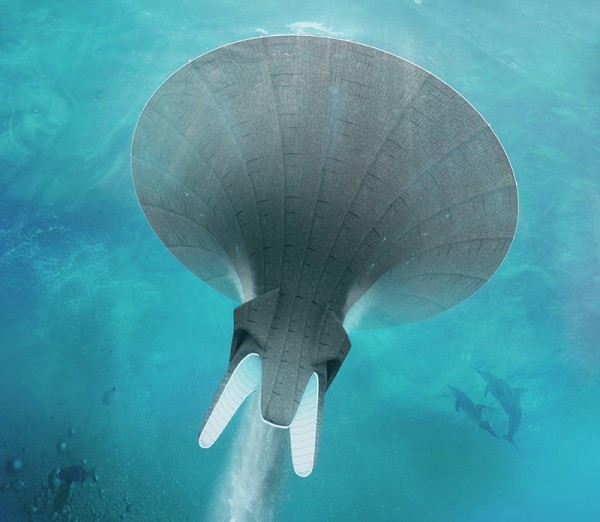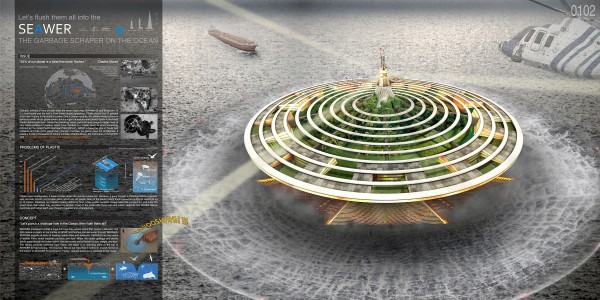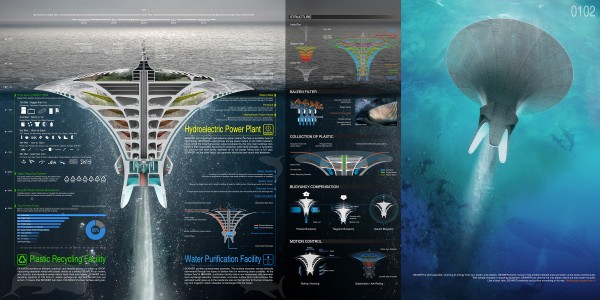Honorable Mention
2014 Skyscraper Competition
Sung Jin Cho
South Korea
Globally, millions of tons of trash enter the ocean each year. Between 60 and 80 percent of it is land-based and the rest is from ocean-based operations. Due to ocean currents, this plastic waste collects in particular areas of our global ocean. Such a region of accumulated plastic debris is the North Pacific Subtropical Gyre, where the prevailing ocean currents have created a large mass of tiny particles of plastics, which have resulted in a “plastic soup” commonly referred as the Great Pacific Garbage Patch (GPGP). GPGP is twice the size of Texas and contains six times more plastic than plankton biomass. As plastic does not biodegrade, it poses a threat to thousands of marine animals.
Seawer proposes to install a huge drainage hole 550 meters in diameter and 300 meters in depth in the middle of the GPGP. The project would engulf all kinds of floating trash filled with seawater. Seawer consists of five layers of baleen filters, which separate particles and fluids. The plastic particles collected from filters are taken to a recycling plant atop of the structure while seawater is filtered and stored in a large sedimentation tank at the bottom to be further cleaned and released into the ocean.

















